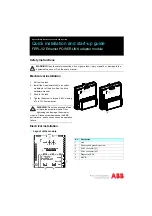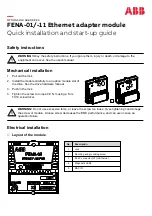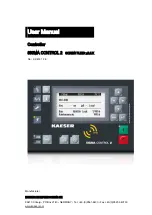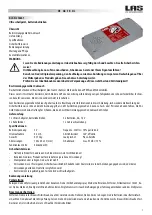
6/21/96
4
HOW THE LINK 2000-R CHARGES
See page 18 of LINK 2000 manual for details of the Ideal Charge Curve.
The
LINK 2000-R
uses our
Ideal Regulator Output Module
to control the
alternator to conform to the Ideal Charge Curves four defining cycles; Charge, Accep-
tance, Float, and Equalize. The following discusses details of each of the cycles.
NOTES:
1) Terminal references for the Ideal Regulator Output Module.
2) Voltage values given are for 70
0
F and liquid lead-acid batteries.
TURNING THE REGULATOR ON
The regulator is turned on by supplying 12V to the REG ON (brown wire)
terminal. It must be on only when the engine is running. See Page 12.
DELAY START-UP
Behavior: No output on the Field terminal (blue wire).
Two second delay allows time for the engine to start.
RAMPING UP
Behavior: Output of alternator increases over a 20 second period.
Ramping up the alternator output avoids shock-loading the belts with full
alternator output. The output on the FIELD terminal is increased over a 20 second
period until the alternator current limit (Default Value 100A) is reached. The
Charge Cycle now begins. If the acceptance voltage is reached before the current
limit, the Acceptance Cycle begins.
CHARGE CYCLE
Behavior: Alternator current at maximum and battery voltage increasing.
The Charge Cycle insures fast charging without alternator overload. The
alternator current limit will not be exceeded. The FIELD output is varied to hold the
alternator at its limit until the acceptance voltage is reached. When the acceptance
voltage has been attained by either battery, the Acceptance Cycle begins.
CYCLE
STATUS
LIGHT
RED
LED.
ON
ORA-
NGE
LED
ON
ACCEPTANCE CYCLE
Behavior: Battery Amps falling, voltage at 14.4V. (Voltage depends on
battery type and ambient temperature settings.)
The Acceptance Cycle guarantees thorough charging by continuing to charge
the battery until the charging current becomes a small percentage of battery
capacity (2% default). The alternator output is varied to maintain the battery at
the acceptance voltage. During the Acceptance Cycle the alternator current limit
will not be exceeded even if a heavy load is placed on the system.
When the batteries have reached the acceptance voltage and the current is
below 2%, the Acceptance Hold Cycle begins. If the Acceptance Cycle has
lasted 3.5 hours, the Float Cycle begins, even if the charged parameters have not
been met. If the voltage of either battery falls below the acceptance voltage for
more than 2 minutes, the Charge Cycle starts again.
































